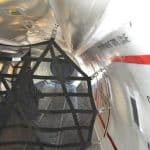
While the concept of air cargo might be familiar to many, comprehending the intricacies of the process is key to avoiding delays and misplacement of goods. Air freight offers a rapid, efficient, and convenient means of transporting goods over considerable distances. Here’s an in-depth look at how air freight operates:
A Detailed Walkthrough of Air Freight Shipping
Air freight involves a sequence of steps, similar to other transportation methods. Adhering to these steps ensures smooth shipment, minimizes delays, and maintains transparency throughout the process. Below is a step-by-step breakdown:
- Booking the Shipment
- The initial phase involves reserving your shipment with a reputable provider. Essential documentation such as invoices, packing lists, air waybill (AWB), and any necessary permits should be ready at this stage.
- Cargo Preparation at the Point of Origin
- Prior to loading onto the aircraft, freight is packed onto skids. The shipper is responsible for proper packaging suitable for air transport. The freight then proceeds to a cargo terminal for inspection, labeling, and documentation, which are crucial for its traceability.
- Customs Clearance and Inspections
- International cargo undergoes customs clearance, varying based on its origin and destination. Providers assist in navigating inspections and compliance with legal requirements before departure.
- Transportation to the Departure Airport
- Post-inspections, the freight is conveyed to the airport. This step often involves TSA-certified local cartage pick-up agents.
- Loading onto the Aircraft
- Airports employ specialized equipment and handlers to load shipments onto planes, considering the unique nature of air cargo.
- In-Transit Cargo
- The cargo is now airborne, en route to its destination. Air freight’s limited touchpoints ensure enhanced security and traceability during flight, with the airline bearing responsibility for safety.
- Unloading at the Destination Airport
- Upon landing, the cargo is offloaded and transferred to the cargo terminal at the destination airport for additional inspections.
- Final Delivery Stage
- Following destination city inspections, the cargo is prepped for final delivery. Providers can facilitate finding a carrier for this last leg of the journey.
Options for Air Transit
Air freight offers various transit speeds, balancing between urgency and cost-effectiveness:
- Next Flight Out: The quickest option available.
- Second Day: A compromise between speed and cost.
- Deferred: The most budget-friendly choice, where cargo is on standby.
- Charter: Offers a dedicated aircraft for your shipment.
Elevating Your Supply Chain with Air Freight
Incorporating air freight into your supply chain can significantly enhance its efficiency and reach. Companies like ArcBest offer flexible air freight options and expert assistance, working with vetted air carrier partners to deliver comprehensive air shipping solutions.





